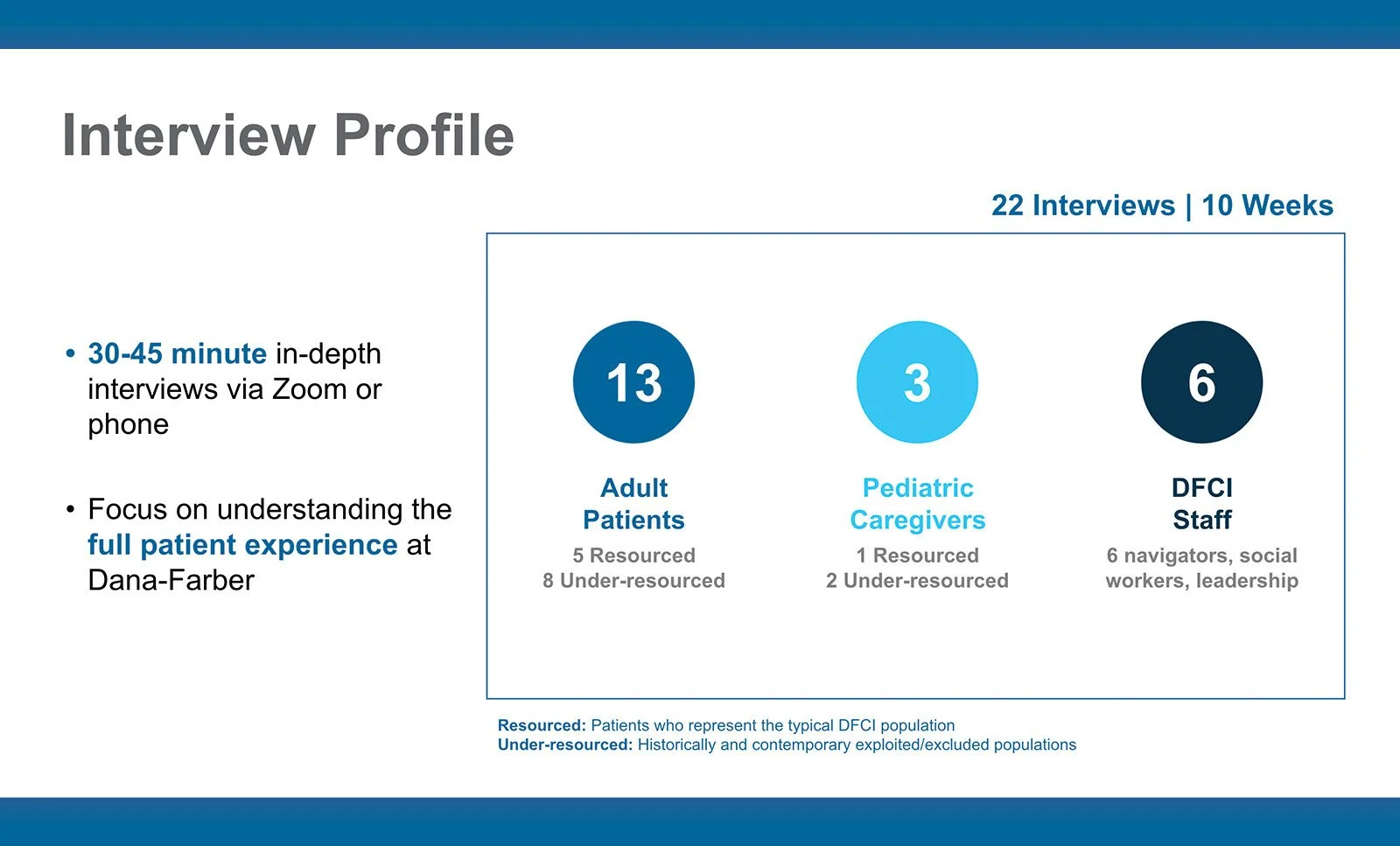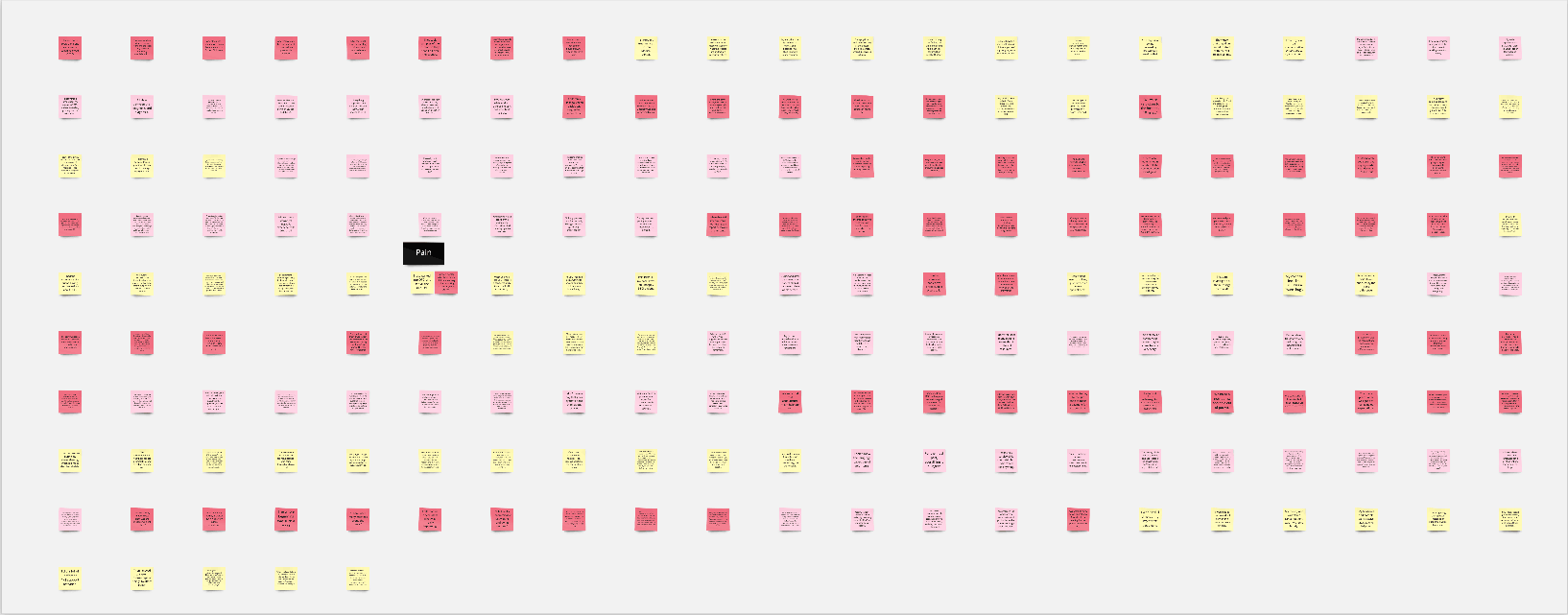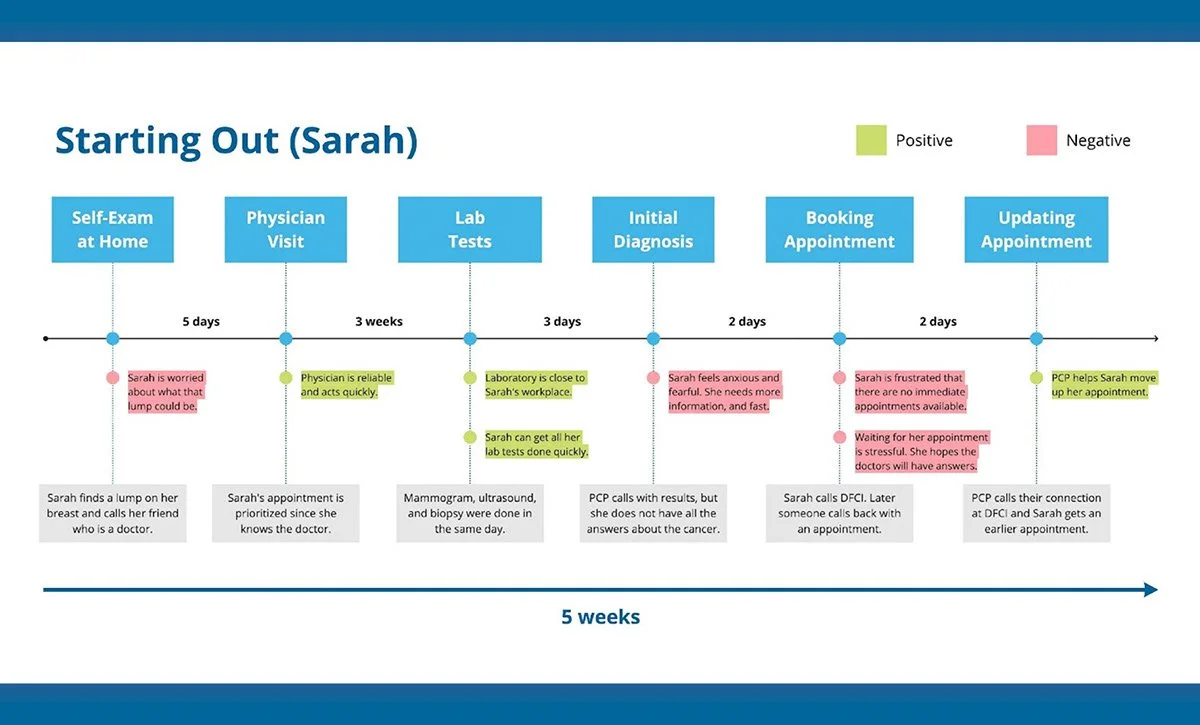User Research & Design Strategy
Dana-Farber Cancer Institute
Accelerating innovation through empathy
and strategic thinking.
Project Overview
Lessons learned from the rapid industry response to the COVID-19 pandemic highlighted Dana-Farber’s need for accelerated and continued digital health innovation. This user experience project focused on capturing a range of patient voices to uncover insights around areas of improvement. The insights were later presented to leadership to encourage further action.
Our final outcomes included establishing a framework and demonstrating UX capabilities at Dana-Farber, planning and conducting user research, and developing corresponding insights and recommendations for an initial set of patients. We also created onboarding materials and templates for future researchers to more seamlessly integrate and continue this work.
Challenges
When this project started, Dana-Farber did not have user experience capabilities or a roadmap. Furthermore, other departments within the Institute were not familiar with the design research process, so our secondary job was to explain the value of understanding user experiences and making design decisions informed by insights.
Patient Demographics
We didn't have an understanding of our patient population and the range of demographics we needed to capture when we started this work. As it turned out, there were more demographic facets that needed to be captured than we had expected. As a result, we talked to various areas of the Institute who work with patients, ranging from clinical to social to financial counselors, to determine a range of representative demographics.
Patient Privacy & Safety
Throughout our journey, we came across many different challenges that delayed our initial project plan, forcing us to pivot our strategy several times. Such challenges included limited access to patients due to privacy regulations and availability, slow turnaround times due to the many departments that we had to connect with each step of the way, and the scope of the problem that we were tackling, which continuously required us to reframe the project as we became aware of new information.
Due to COVID-19, our access to the medical facilities was limited as was our ability to communicate with patients. This required all of our interviews to be conducted remotely. To listen to a broad range of patient perspectives, we conducted interviews on Zoom for tech-friendly participants, and via phone calls for patients with limited access to technology. As we developed our interview guides, we needed to pay careful attention to the ways we addressed the sensitive subject matter of the patient experience, and adapt our tone and questions to make the patients feel at ease.
Patient Accessibility
Furthermore, our interviews included talking with patients whose primary language was not English. These interviews required us to adjust our interviewing technique and note taking approach to accomodate for an interpreter during these conversations. Unfortunately, this limited the time we spent with patients and our capturing of their perspectives.
Work
We were responsible for establishing a solid project foundation for future designers to easily assimilate into. For that reason, we placed great importance on educating ourselves about the subject matter, and designing a flexible research plan that constantly evolved as we learned more about the Institute.
Establishing the Framework: Recruitment, Interviews and Translations
In addition, we worked on a comprehensive interview guide designed to encourage patients to share their most relevant thoughts within the time constraints of a short user interview. Our access to patients throughout this process was limited, and it was crucial that we thought strategically about how to gather information. We also took into consideration the potential for emotionally triggering questions. To capture a diverse range of patient perspectives, we translated the interview guide into multiple languages and used an interpreter to conduct interviews in Spanish and Portuguese.
Logistics & Tools: Zoom, Teams, and Miro
User Interviews happened through Zoom and the phone, and we used Microsoft Teams to keep track of our appointments and interview notes. We also used the online collaborative whiteboard platform Miro to gather and analyze data, so that we could find meaningful insights and opportunities to improve patient experience.
Outcomes
Our end results included several different deliverables, ranging from user personas and journeys to considerations for further research.
Improving the Patient Experience
For Dana-Farber leadership and management, we completed a presentation and artifacts detailing opportunities for an improved patient experience. This includes user personas and journey maps, insights, and recommendations. This presentation was critically important to the project because our ability to show the value of design will directly influence the budget allocated to future design work.
Future Research
Secondarily, for management, deliverables were designed to help new researchers at the Institute. We documented our entire journey in a process book designed to facilitate the onboarding of future researchers, and also created a detailed document containing all the information that we learned about the Institute and the services it offers. In addition, we created a flexible research plan, multiple research guides, user personas, user journeys, and a journal study template.
Reflection
Learning to Adapt
During this project, we ran into several obstacles. As previously mentioned, several things took longer than we had expected due to regulations and information flow, and the complex subject we were addressing had to be continuously reevaluated. As a result, we learned to adapt and plan for these challenges, always making sure to have an alternative research plan ready in case things did not go smoothly.
Listening to Patients
Creating comprehensive user guides that could be tailored to participants with different sociocultural backgrounds and conducting phone interviews with the help of interpreters were also major learning points throughout this process. They required us to be aware of the various ways in which patients feel comfortable expressing their ideas. In retrospect, it would have been ideal to start user interviews earlier and have better planned for the complex and bureaucratic nature of this particular subject matter.
Communicating Insights
Lastly, presenting the results and insights from our research to a large audience required careful consideration. We embraced the power of storytelling, while also crafting our presentation in a way that allowed the audience to easily assimilate the ideas we wanted to convey. There were many terms that the audience was either not familiar with or that had to be used in the right context, so we received support from relevant parties to make sure the information we presented was as accurate and clear as possible. With the help of their feedback, and after many iterations, we were able to present something impactful that reached our audience and sparked meaningful conversations about the patient experience and the next steps for this project.
I’m Luciana, a creative and strategic designer based in Massachusetts.
With a solid foundation in product design, a Master’s Degree in Design innovation, and a Futures Thinking specialization, I seek for ways to leverage research and creativity to address pressing social issues and drive innovation.







